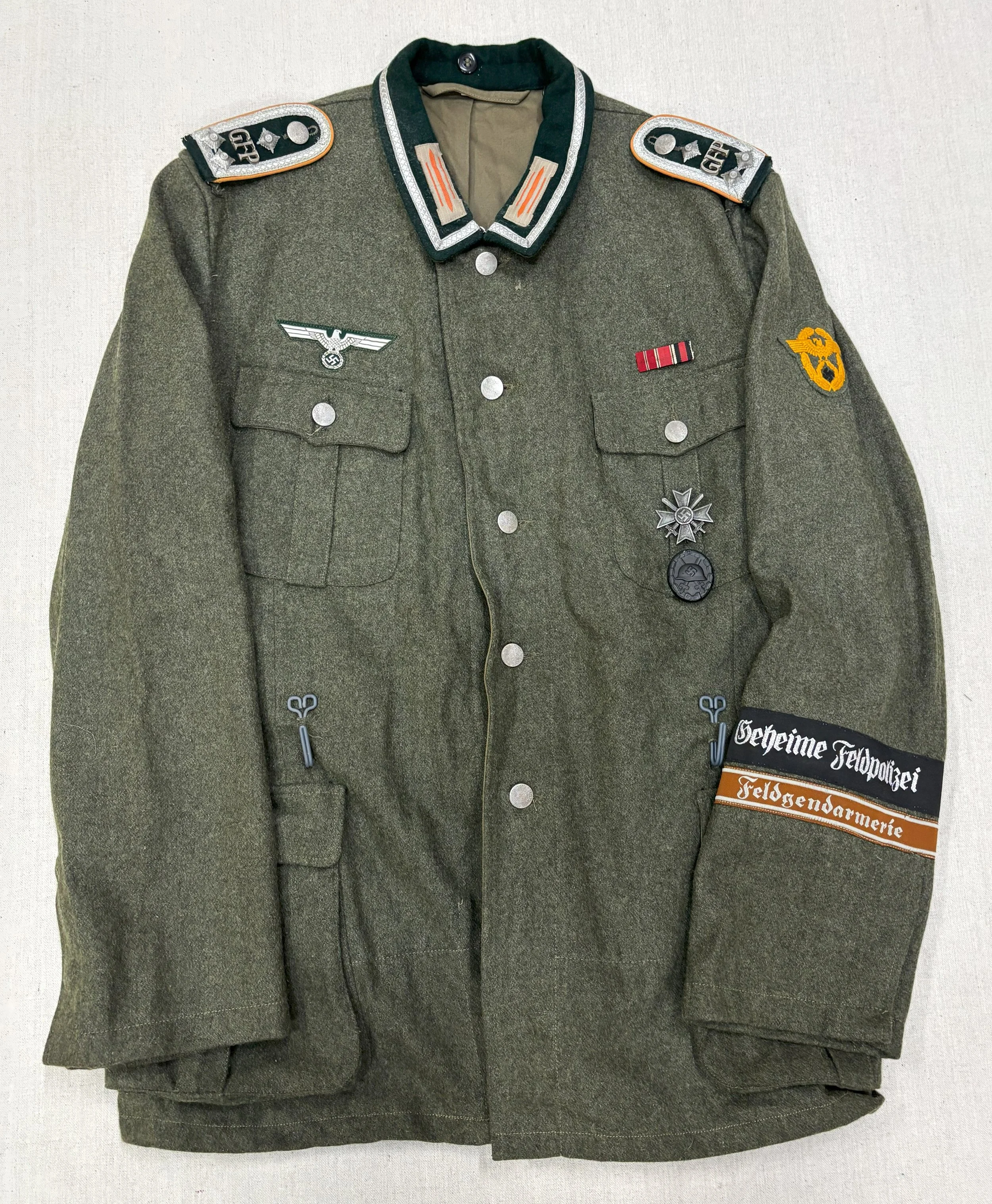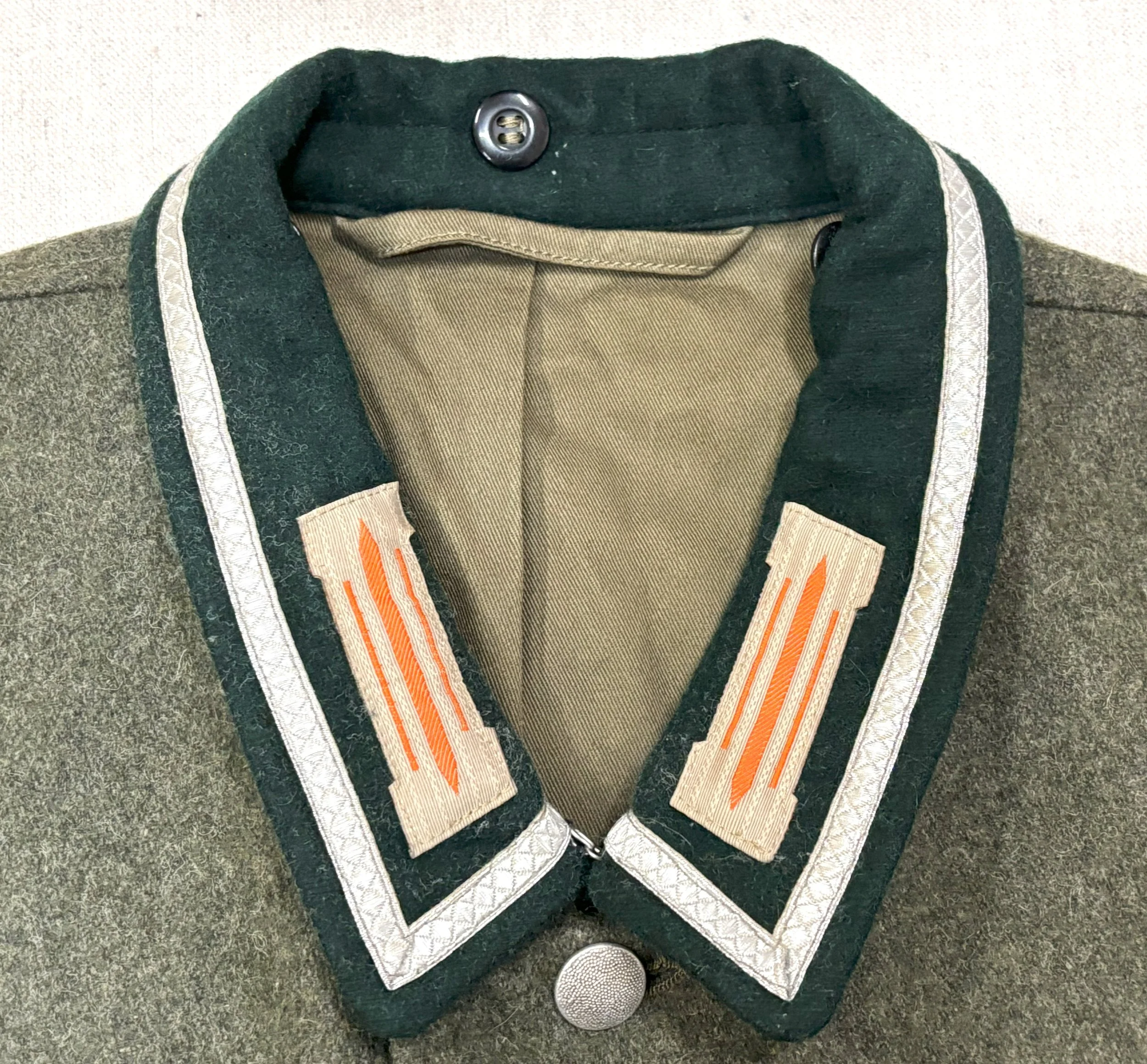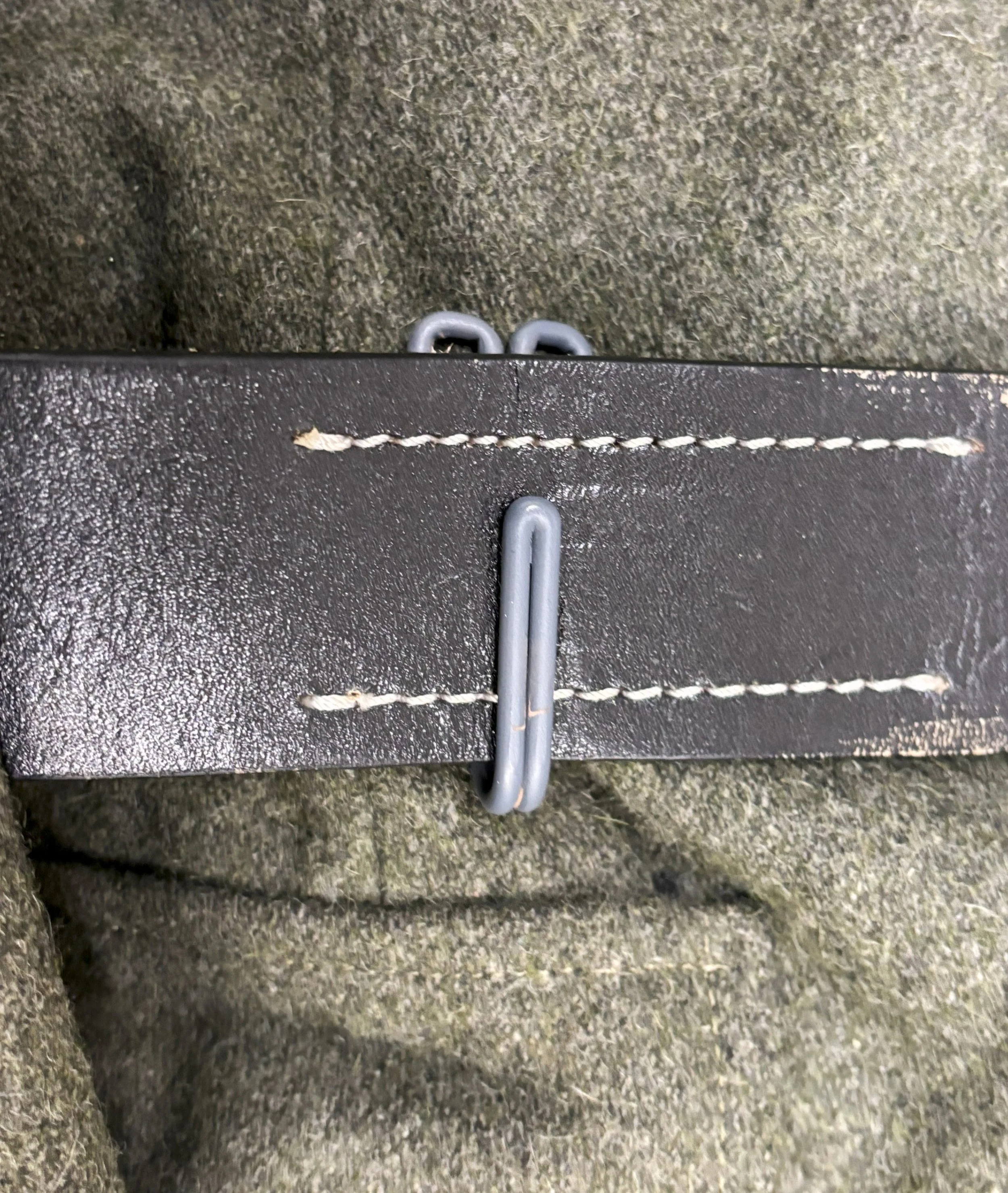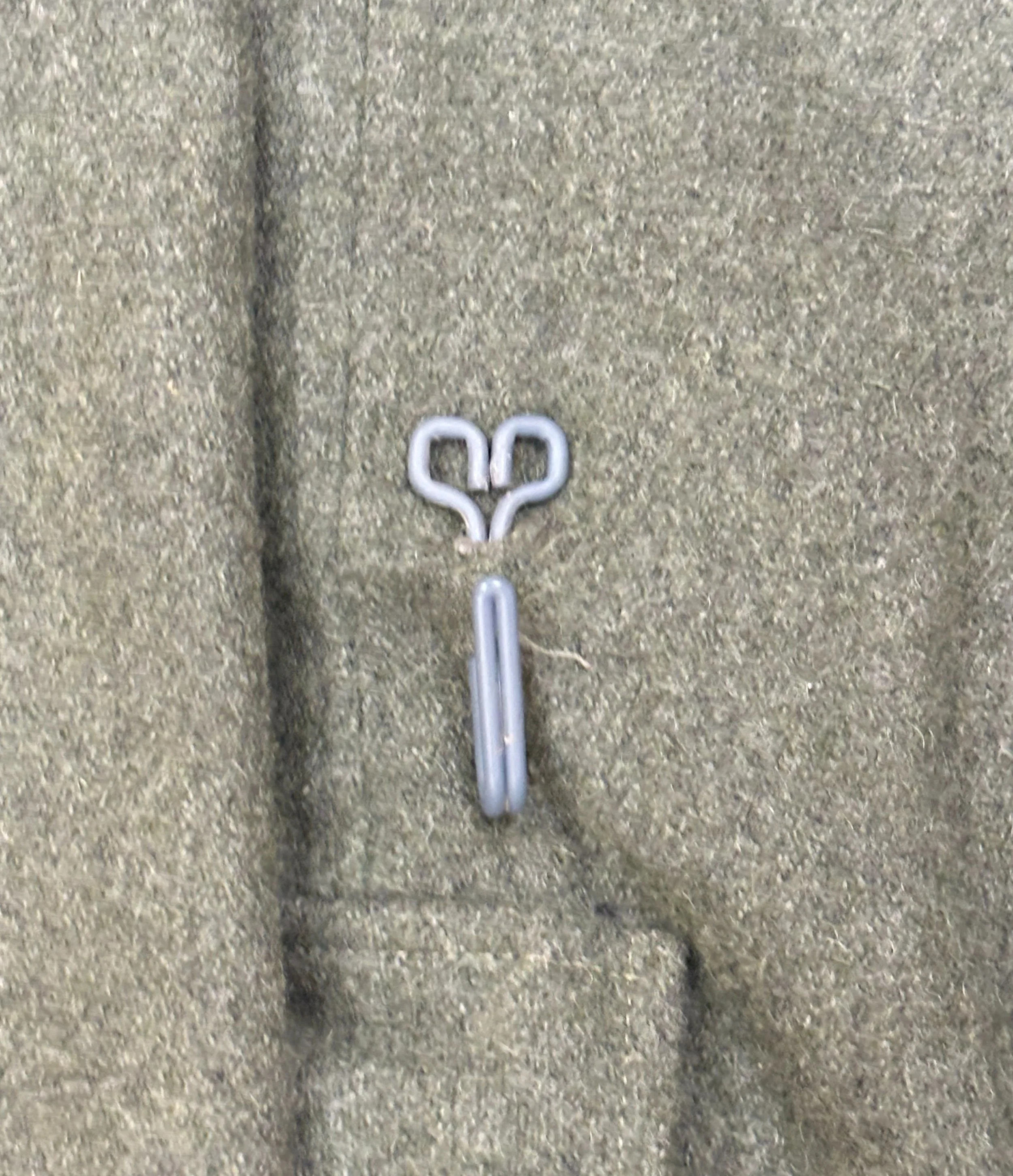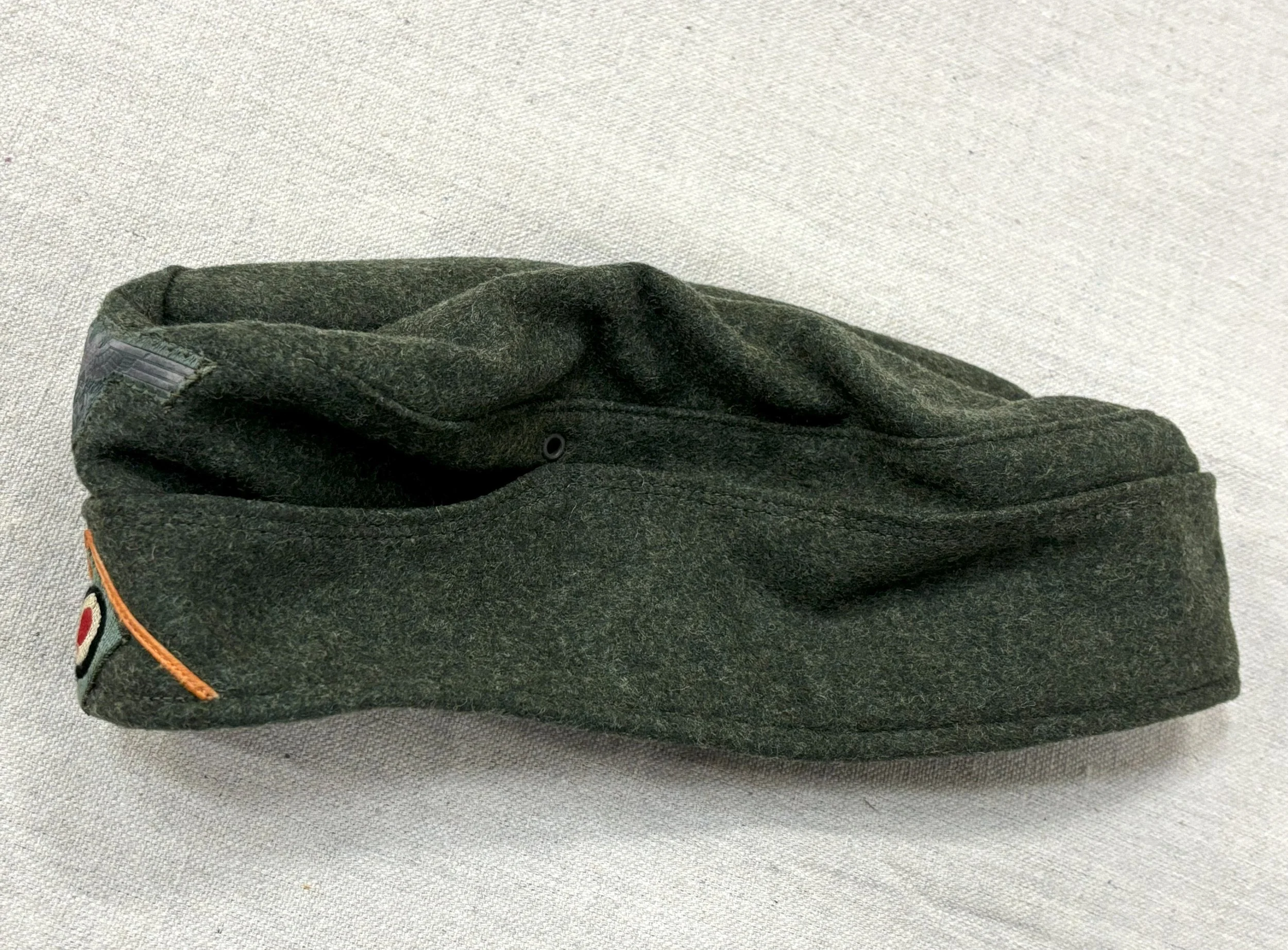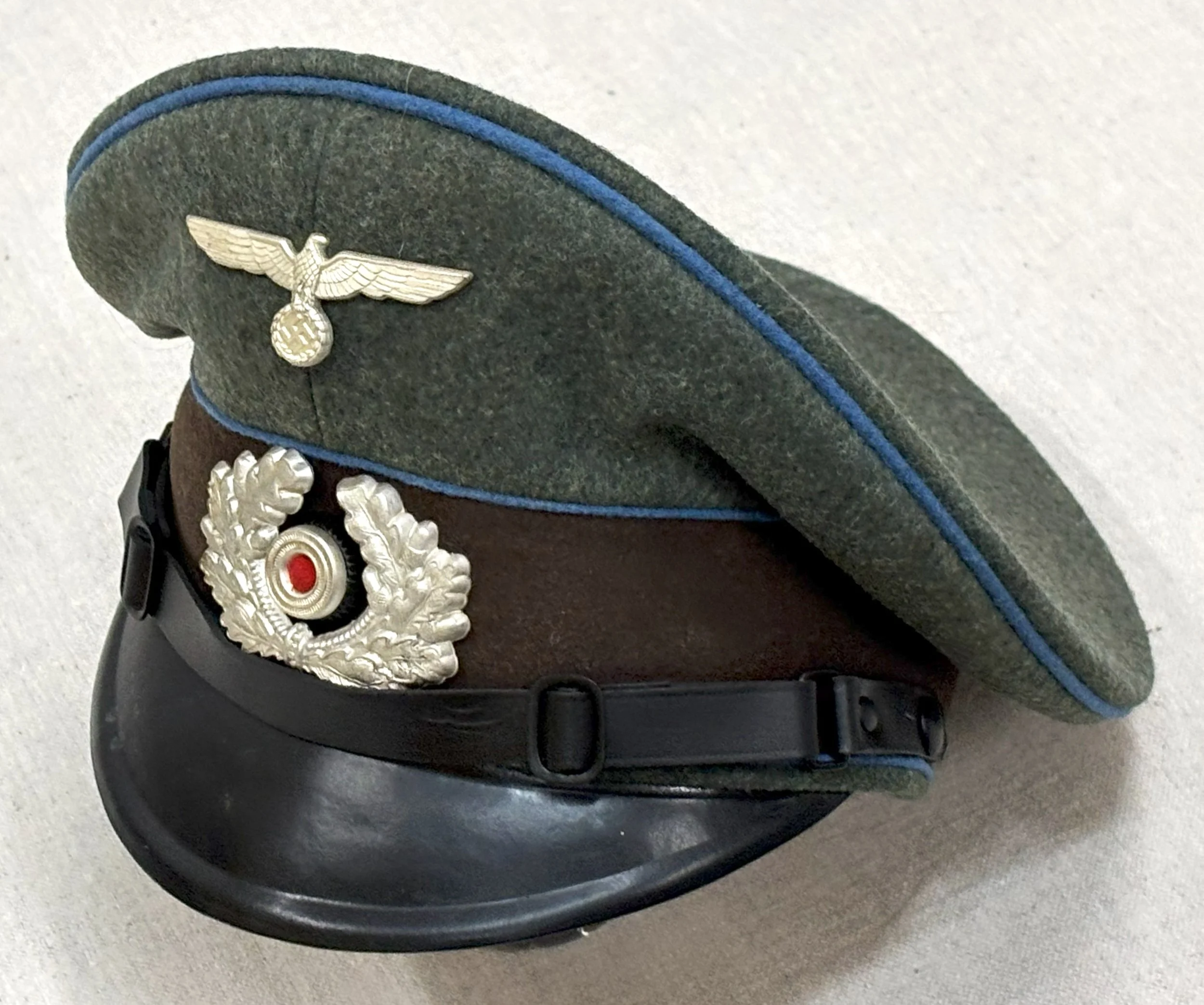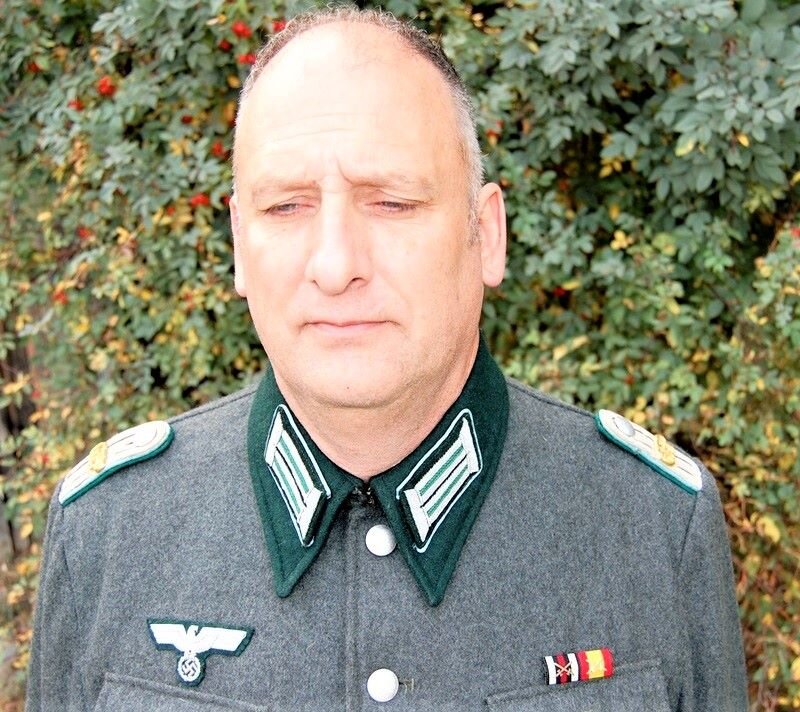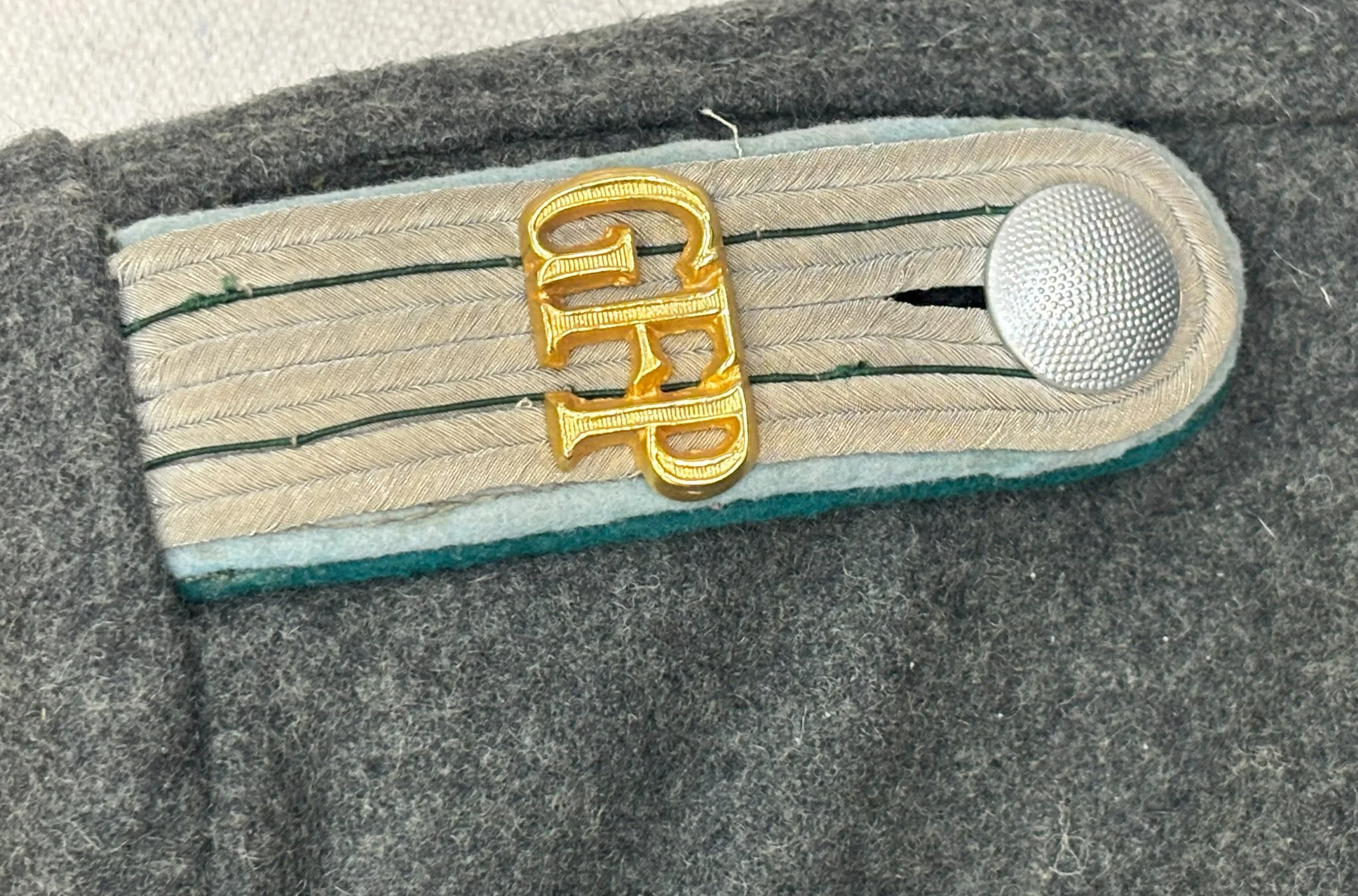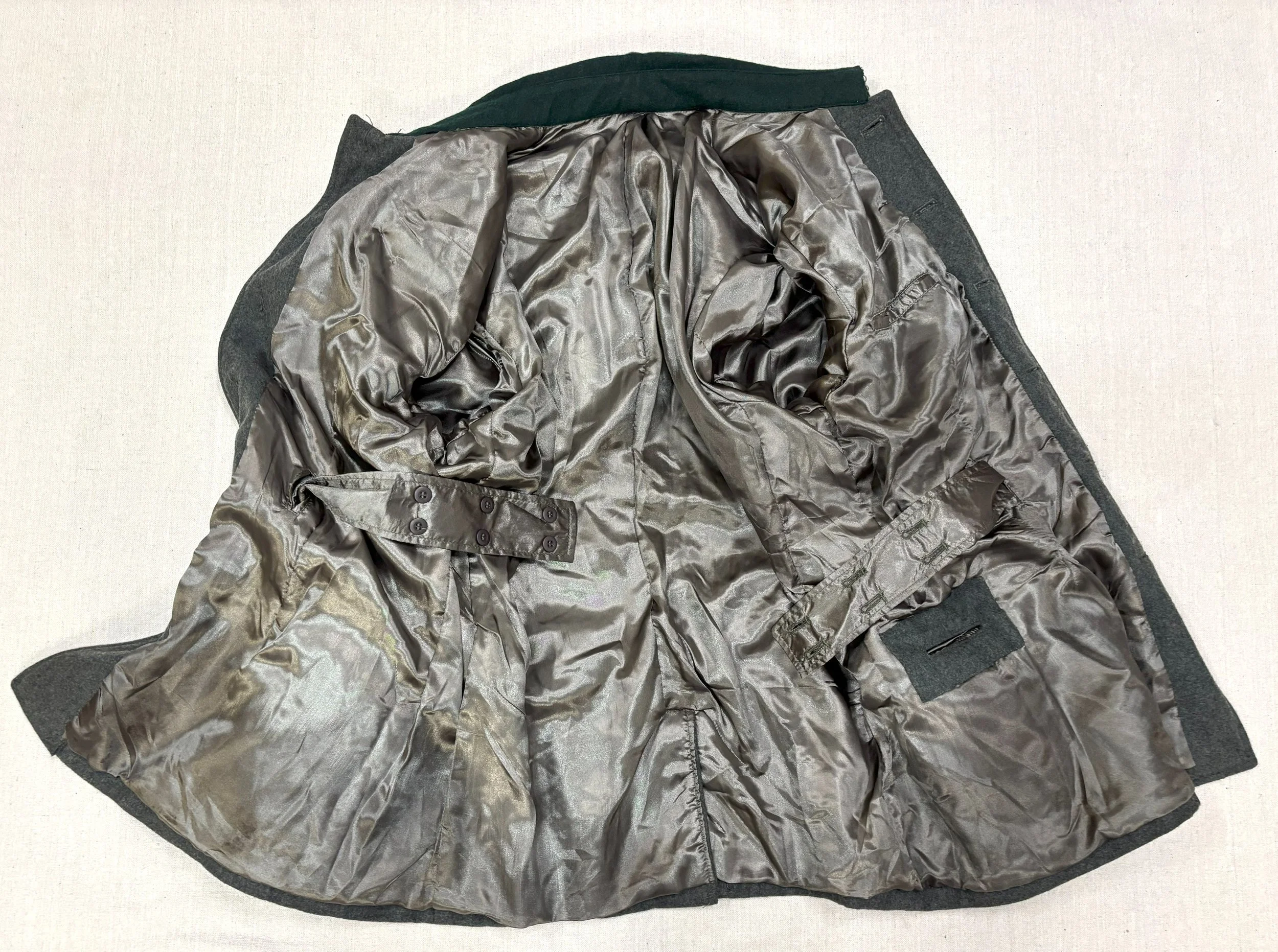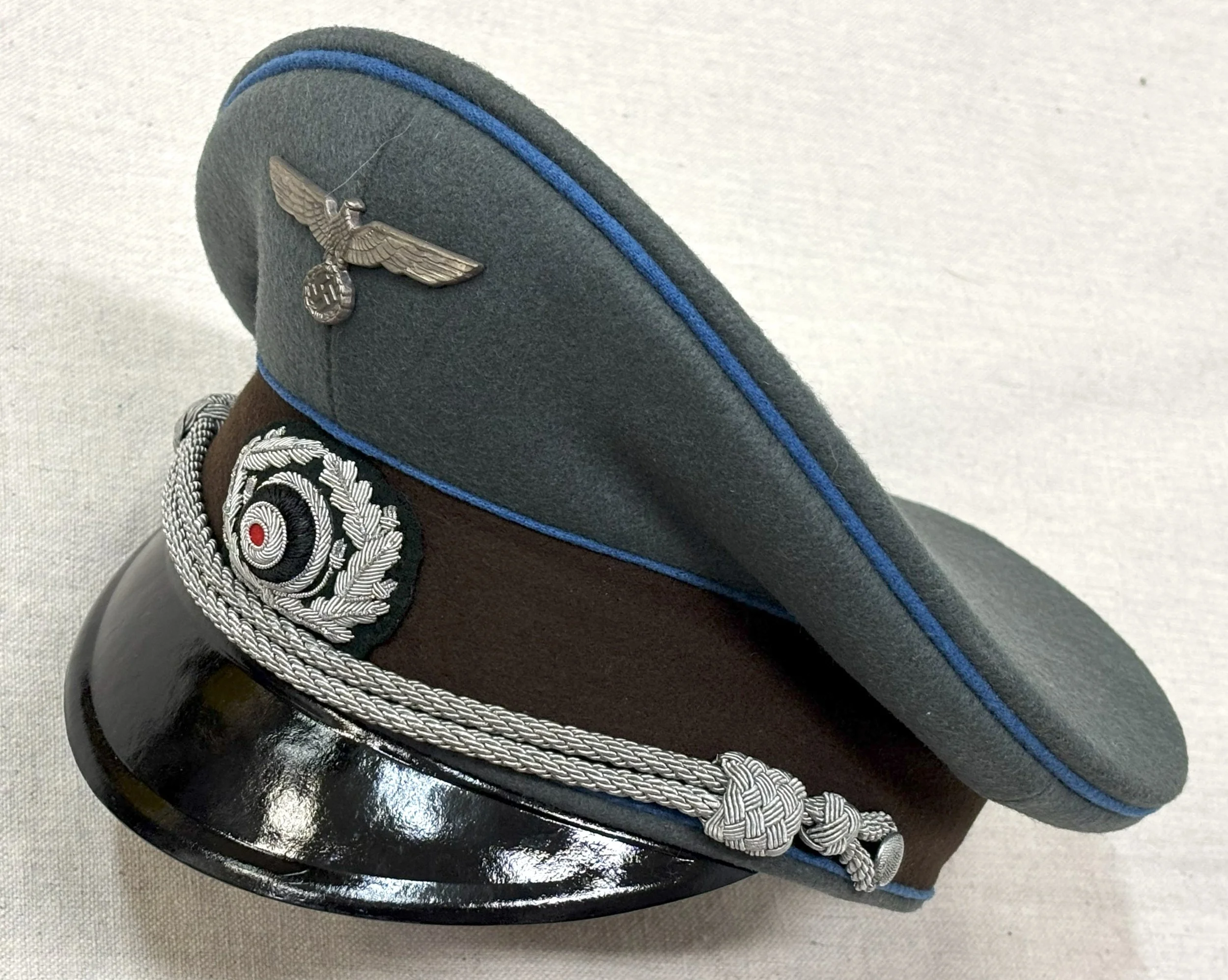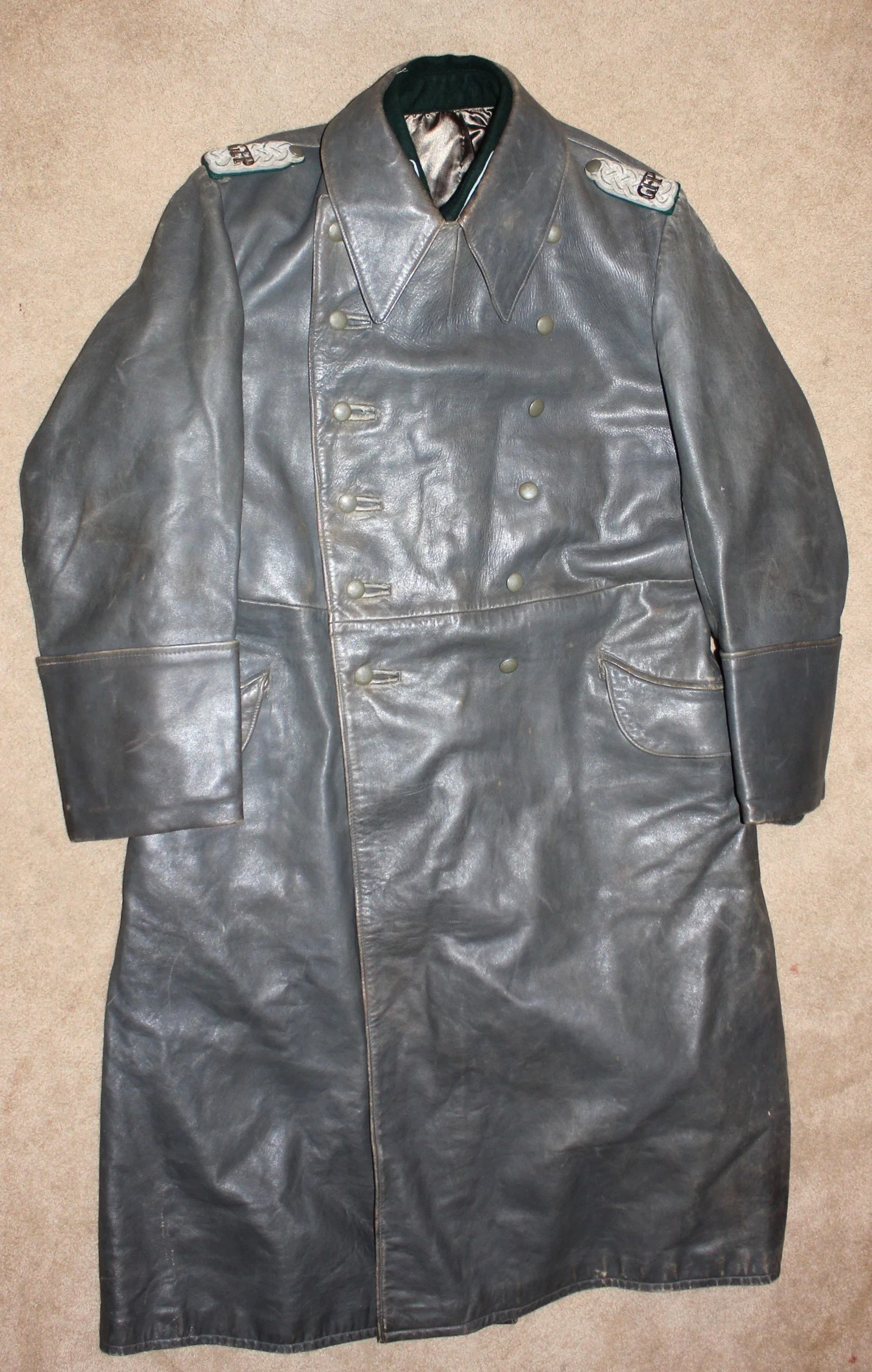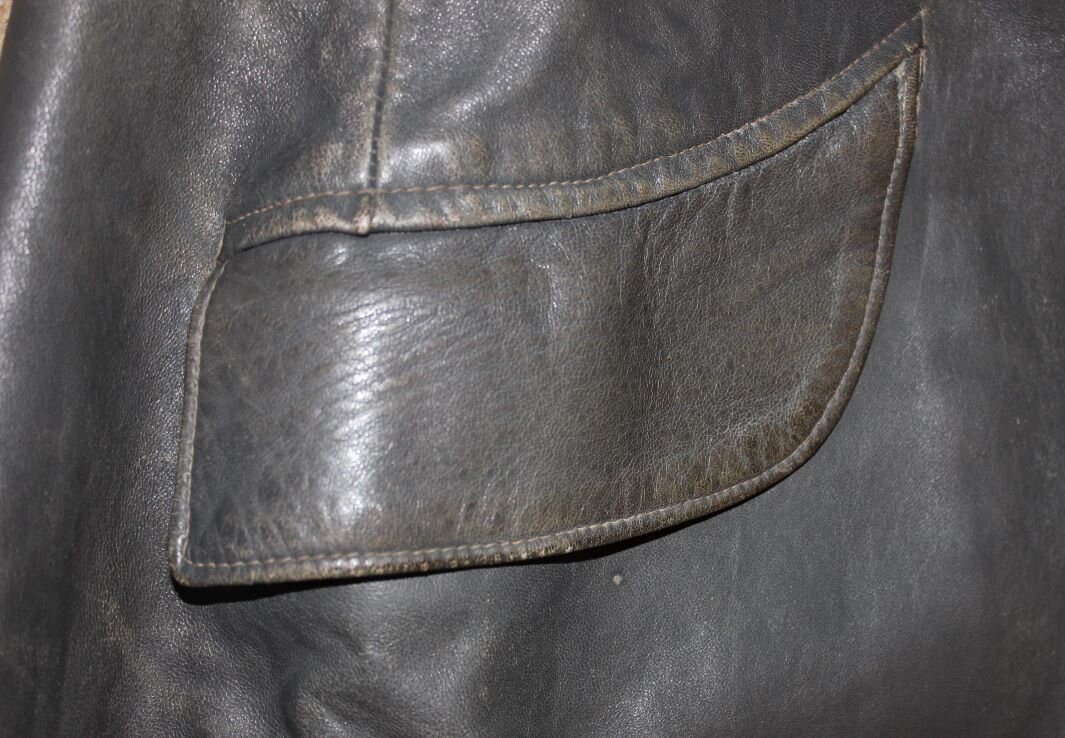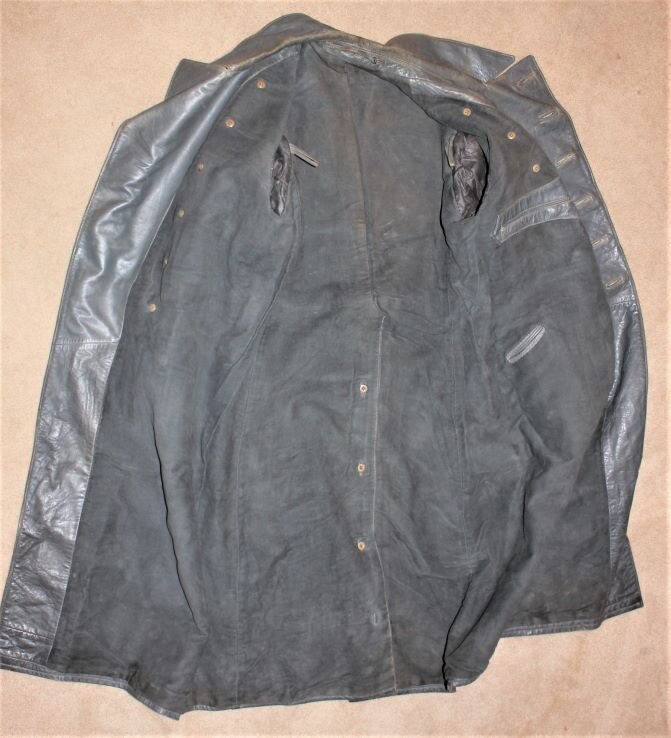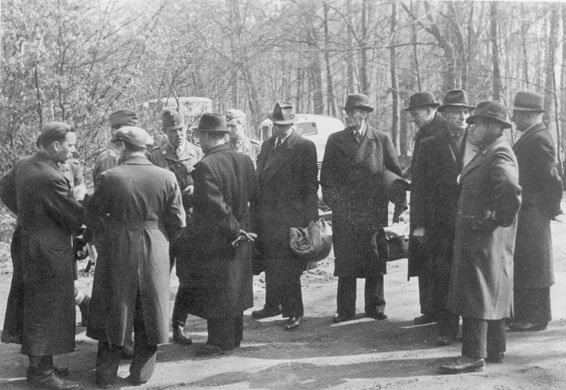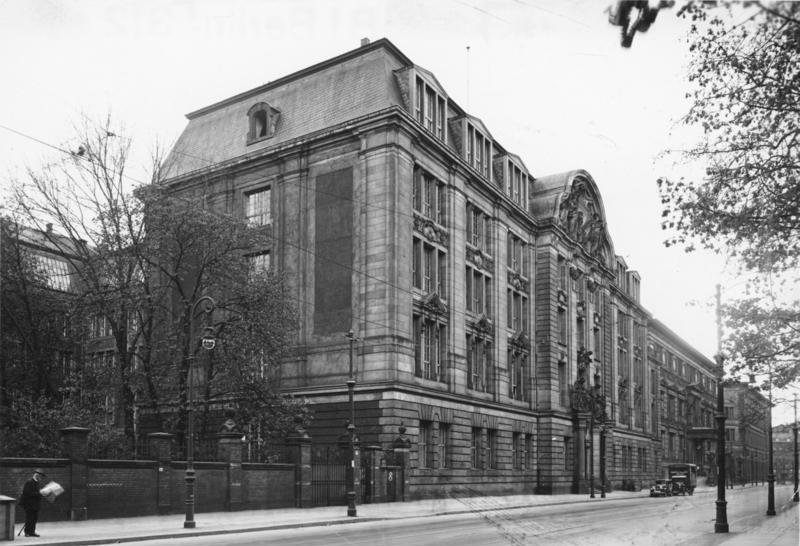Geheim Feldpolizei, & Kripo:
*“New Photos” Senior Feldpolizeiassistent, Geheim Feldpolizei ~ Feldpolizeiassistant GFP, Felgendarmerie:
The GFP was created on 21 July 1939. Although officially part of the Wehrmacht, its personnel were mainly recruited from police officers who had been assigned to the armed forces, as part of the Secret Military Police. Often, the members of the Feldgendarmerie were seconded to the GFP as needed, adding the GFP ciphers to their existing orange piped shoulder boards. They were assigned to the legal status of Wehrmachtsbeamte auf Kriegsdauer (Military Officials until the end of the war) and retained the authority of other police agencies as well as the Sicherheitsdienst.
GFP agents could wear either their civilian clothes or uniforms, depending on the course of their duties. A GFP official was also entitled to pass through any military roadblocks or enter any military facilities or buildings. They could utilize any military signals and communication equipment, commandeer military vehicles, and procure military supplies and accommodation wherever necessary in the execution of their duty.
In occupied areas, the GFP also provided personnel escort to military VIPs, assistance to state security agencies in counter-espionage, interrogation of suspects, prevention of sabotage, and detection of enemy agents.
In practice, GFP activity depended on the region in which the region it was operating. Work on the occupied Northern and Western Europe was markedly different from operations conducted on the Eastern Front. In the Netherlands, Denmark, and Norway, the GFP agents were mainly confined to the secret police protection of senior Wehrmacht officers. In Belgium and France, the GFP became an executive part of the civilian police service, working alongside the military authorities to combat acts of resistance, Allied espionage, and sabotage using terror tactics such as detentions, deportations, and the execution of hostages. However, in the East and the Balkans, the GFP used constantly escalating terror against partisans, Jews, and arbitrary “suspects” of the NAZI Regime. Their operation blurred edges with the KRIPO and Gestapo, and received the nickname "Gestapo der Wehrmacht”.
Working as an anti-partisan group in the East, it worked right alongside the Einsatzgruppen to torture and execute captured fighters suspected of helping Soviet resistance. With lots of help from collaborators, the GFP also mounted operations to systematically burn down homes or even entire villages. The GFP was also responsible for summarily of summarily executing prisoners before the arrival of the advancing Red Army. For example, in 1943, a GFP reported to SS and Police Leader William Krichbaum stated that on the Eastern Front, 21,000 people had been killed, “some in combat, and many shot after interrogation.”
This uniform is that of a Stabsfeldwebel he has been ‘Seconded’ to the GFP, and has added both the shoulder board ciphers and the cuff title (right above his Feldgendarmerie title) to his M36 uniform. He has seen service in the pre-war occupation of Austria and Czechoslovakia as well as Operation Barbarossa. He has been awarded the Merit Cross with Swords and the Wound Badge in Black. With the uniform, he wore the standard enlisted black belt and buckle, with a pistol in a holster. and black boots or shoes. He likely wore with it the early stone gray trousers, with either an overseas cap or NCO Schrimmutz piped in orange.
*Note: This group of the uniform collection was mixed up, the stories, and the pictures were bugging the hell out of me, and when I was rebuilding my site for the fourth time! I had them wrong, from the start, maybe, but I re-shot new photographs of both the GFP fellows and the Wehrmacht Transport set of uniforms. I had talked to my Hat Expert friend and a couple of other uniform collectors, and people questioned me, and I never had good answers. So soon the caps are going to be moved around and rearranged…. It was a big mistake to keep hats in hat boxes, uniform jackets in boxes, and trousers, all separated. I think this is right now
“Upgraded Pictures” Leutnant, Feldpolizeisekretar (GFP):
At the outbreak of the war, the German High Command established a secret police force, known as the Geheime Feld Polizei (GFP), to support the Armed Forces. It was primarily designed to conduct security work in the field as the executive agent of the Abwehr (Intelligence Service) of the Wehrmacht.
The experiences of the German Army in the 1870-71 war, and particularly in the First World War, had made clear the necessity for a Geheime Feldpolizei (GFP or ‘Secret Field Police’) for the defense of occupied areas from espionage, sabotage, subversion; for early intervention against the undermining of their troops and the fight against resistance organizations. It, therefore, followed that units of Geheime Feldpolizei were required for this type of operation within the Armed Forces after 1933.
In the beginning, the GFP was put together with personnel from the Gestapo and the Kriminalpolizei (Kripo or ‘Criminal Police’) who notoriously operated in plain clothes, carrying only an ID Disc. The very people who created the fear of the knock on the door in the night in Germany. They were commandeered for the duration of the war as officials to the armed forces (known as Wehrmachtbeamten).
These officials were members of the armed forces and, at the same time, also civil servants. They were subject to military discipline; however, they kept the ranks of the police with the addition of der Feldpolizei. Armed forces members, who appeared suitable by way of special knowledge or abilities for GFP employment, were appointed as auxiliary field police officers; however, they retained their military rank. After finishing their service with the GFP, they were returned to their units and sworn to secrecy concerning all operational procedures.
The GFP gained its first experiences during the Spanish Civil War of 1936-1939, with the Condor Legion Volunteer Force. The group consisted of approximately 30 men and carried the designation “S/88/Ic”. They co-operated closely with the secret service of Franco’s troops (Servicio de Información Política Militar). One of the main activities in Spain was the pursuit of Germans, who fought in the International Brigades. Arrangements with Franco meant that captured Germans from these brigades were handed over to the GFP.
During the partial mobilization of the armed forces for the occupation of Austria in March 1938, the military district VII Munich sent GFP group 570. During the annexation of the Sudetenland in the Autumn of 1938 and the final occupation of Czechoslovakia in the spring of 1939, cooperation with the intelligence organizations of other security agencies was being developed. While the GFP fulfilled police functions within the operational areas, the security agencies made mass arrests of potential opponents to eliminate resistance.
The GFP maintained close cooperation with the section Ic Abwehroffizier (Counter-Intelligence Officer) of the intelligence section of the armed forces.
GFP Personnel were provided with identity papers, which allowed them to enter any building, pass any barrier, into any restricted area without question. They were also empowered to use all military channels of communication as well as any transport or billeting facilities they deemed necessary.
This pre-war GFP officer uniform followed him into the war, as he wears the standard ‘HEER’ M36 Officers Tunic with Heersbeamten or Administrative Official shoulder boards and collar insignia with the Graublau Waffenfarbe of the Army Justice Office as an underlay. The Latin cipher GFP is attached to the shoulder boards to show the officer is a secret police officer. When it needed to be known, like the office. Additionally, the officer wore a black belt with an aluminum Fraktur-lettered cuff titled “Geheime Feldpolizei". This would be a man who knows he has few friends he can count on, most in the service with him, and he is interested in everyone around him, even his own.
The uniform represents a Beamte/Officer, from an Administration position, drawn into the SD. The older style Schirmmutz does not match the uniform exactly, but it’s what he has. He had been in Spain and had a ribbon and wound badge from his time there; he also proudly wears his Horse Riding Badge and Merit Badge. He applied the GFP cipher to his shoulderboards and the GFP cuff title to his left sleeve. Both the Military ID Tag and GFP ID Tags are depicted. He got the hat ad he shifted over the GFP position. The Green piping is for Admin, the light blue/gray for Reserve, and the blue on his cap for the GFP.
*Feldpolizeidirektor, Geheime Feld Polizei, Leather Over-Coat:
From mid-1943 onwards, the GFP was ordered to track down and capture all deserters after some Wehrmacht soldiers in France and Russia had begun joining partisan groups. By 1944, desertion rates rapidly rose following the major retreats of both Eastern and Western Fronts, turning to near rout, near pandemonium, and collapsing German Forces. The Geheime Feldpolizei arrested 3142 Wehrmacht personnel for desertion from Army Group Center in 1944. But many troops were victims of increasingly confused rear areas, where competing, often overlapping responsibilities of military departments meant soldiers did not have the correct permissions or were simply in the wrong locations. Convicted soldiers were either shot or sent to Strafbattalions. The GFP also investigated any claims of defeatist talk in the line infantry.
Another specialist unit called Gruppe 729 was created to interrogate all Wehrmacht soldiers who had managed to escape from Soviet captivity. The general fear was that the NKVD may have “re-educated” these former captives to spread defeatism and Communist propaganda amongst the German Army. Soldiers suspected of being Soviet spies were sent to a special GFP camp at Danzig in Poland. By 1944, the camp held 400 prisoners.
The Gray Heavy-Leather overcoat is like what would be worn with many Polizei and is sort of a trademark of the uniforms on this page. The boards on the jacket are for a Lieutenant, now part of the GFP, and have dark green backing.
*Note: I’ll maybe resoot pictures of it with an officer Schirrmutz, when I get another, they used Heer-style insignia.




